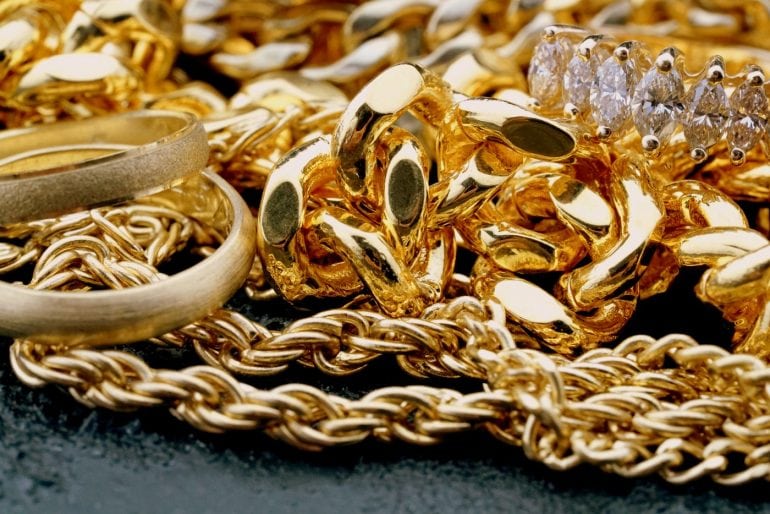Let’s say you have an old ring, necklace, coin or nugget that’s supposedly made of gold.
It only makes sense that you would want to find out if the shiny thing your great aunt left you is the real deal… or if your flea market find is maybe more than just a chunk of worthless metal. So how can you tell?
Is your gold real? Put it to the professional test
If you want to know for sure, your will really need to take it to a certified jeweler or jewelry appraiser. For a small fee, an experienced jeweler can perform tests to let you know, definitively, whether your gold is real or not — and how valuable it is.
A professional will be able to do several tests the average person won’t be able to do at home. For instance, they might run the item through an X-ray, measure the item’s density (specific gravity), and/or may do a test where they rub the gold against a testing stone, then apply an acid solution to determine the karat value. (This is where the phrase “acid test” actually comes from.)
ALSO SEE: How can you tell if silver is real or plated?

How to tell if gold is real: Tests you can try at home
But if you just want to figure it out yourself if you have fine gold, what can you do?
Look at it. Matthew Voss MS, an organic chemist who contributes to NEWTON, operated by Argonne National Laboratory, says that you can often recognize gold by just looking at it.
“Real gold should be a nice soft yellow, and it should not be very shiny. It will certainly have a sheen to it, but it should not shine,” he says. “You can also stick a pin/needle into the gold. If the pin breaks then it is not real gold — gold is soft and malleable.”
Check for marks. Look and see if there are any stamps or hallmarks indicating either the fineness or the karat of the piece. You might need a magnifying glass. You’re either looking for something like 10K or 18K, etc., or a number like 999 or 917.
Of course, authentic gold doesn’t always have markings — and there’s nothing to stop counterfeiters from stamping, either.
Wear it. The greater the gold content, the less chance that it will leave discoloration on your skin. Copper, nickel and even silver are commonly used in jewelry, and when they corrode or abrade after contact with skin, moisture (particularly sweat), cosmetics or chemicals, they can leave a blackish or greenish smudge behind.
Bite it. You’ve seen those old westerns where the grizzled cowboy bites down on his payment to make sure he’s not getting hosed, right? Well, gold is extremely soft, for a metal.
If you bite down, and it leaves a mark — well, it could be gold. It could also be gold-plated lead, which is also very soft. (It could also break a tooth, so be careful.)
However, it’s important to know that while pure gold is soft, when it’s used in various different applications — jewelry, in particular — it’s combined with other metals (creating an alloy) or put on top of other metals (plated) to give it strength.
Try a magnet. Gold isn’t magnetic, so if you hold a magnet up to it, and it sticks to or is attracted to it, it’s not pure gold. Of course, lots of metals are non-magnetic, so this really is not a definitive answer — but can be used as an additional test.
Anything beyond these simple tests might damage your gold, which would be a shame when what you really need is an experienced professional to test it for you.
But, by trying one or more basic things first, you can perhaps determine whether a trip to the jeweler is necessary or not.
DON’T MISS: Funny money? How to tell if a $100 bill is real or fake








